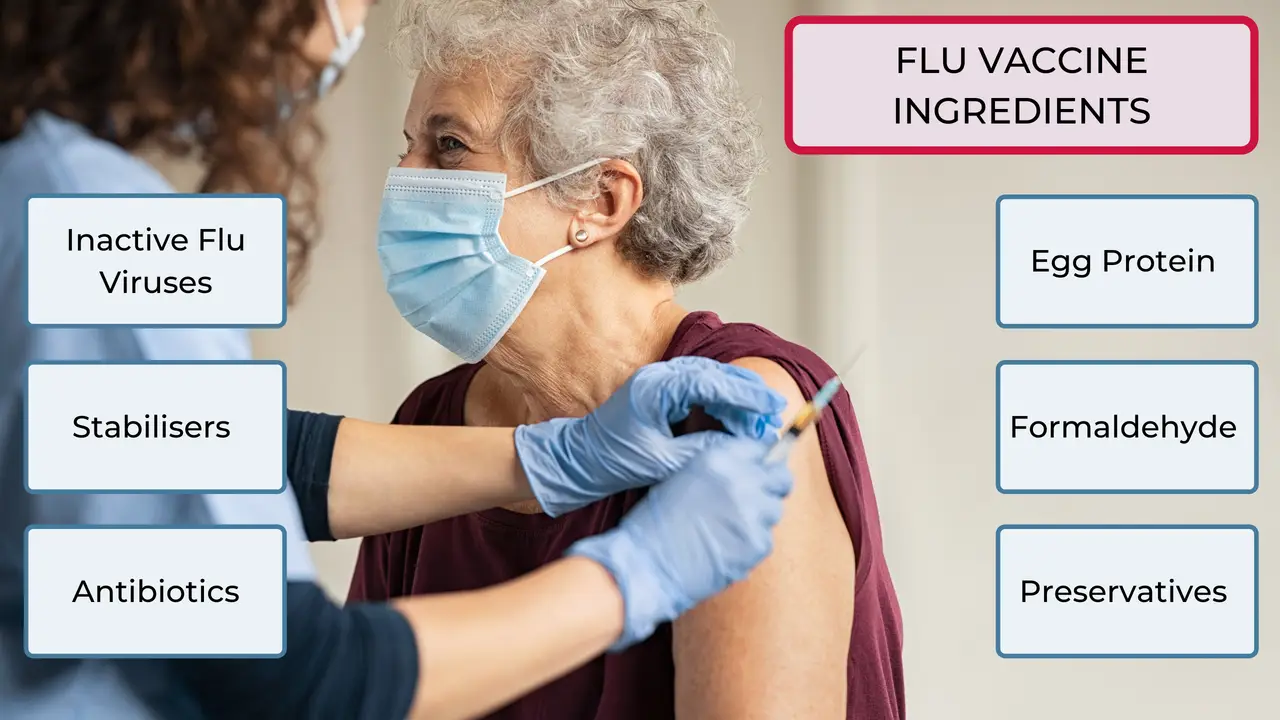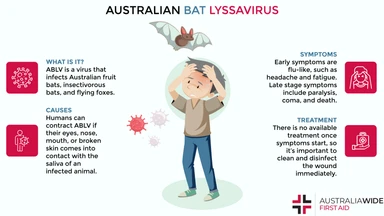What Ingredients are in a Flu Vaccine ?


A vaccine is a biological substance that contains an agent, which stimulates the production of antibodies to provide active acquired immunity against an infectious disease.
Influenza (flu) vaccines produced in Australia contain inactive versions of flu viruses, as well as a host of other ingredients that are designed to safeguard the vaccine's potency, purity, and effectiveness.
Today, we are going to take a closer look at how flu vaccines are developed, and what they comprise. That way, you can take proactive steps against the flu, and receive the flu vaccine, without concern.
Influenza viruses can change their surface structure on a regular basis. As such, they can re-infect people who were thought to be immune to the infection due to a previous bout of the flu, or a previous flu vaccine.
Consequently, new vaccines must be developed on a regular basis to account for new strains of the flu virus. To kickstart this process, the Australian Influenza Vaccine Committee reviews data related to:
Once the AIVC reviews this data, and it considers the advice of the World Health Organisation, it recommends which viral strains should be included in the vaccines for the upcoming flu season. If the Therapeutic Goods Administration agrees with the AIVC's recommendations, it then regulates the quality, supply, and advertising of these new vaccines for public use.
According to the Australian Influenza Surveillance Report (AISR) for the fortnight ending 7 November 2021, 67.7% of flu cases reported in the 2021 flu season were caused by the influenza A strain.
Of these cases, 95.8% were caused by influenza A(unsubtyped), 3.0% were caused by influenza A(H3N2), and 1.2% were caused by influenza A(H1N1)pdm09. According to the TGA, the A(H1N1) strain and the A(H3N2) strain were considered ‘new’, as they differed from the composition of the quadrivalent vaccines produced for Australia’s 2020 flu season.
Quadrivalent vaccines are intended to stimulate an immune response against four different antigens. Quadrivalent flu vaccines, in particular, are designed to protect against four different flu viruses: two influenza A viruses and two influenza B viruses.
As such, the quadrivalent vaccines produced for the 2021 flu season were designed to protect against the new strains of A(H1N1) and A(H3N2), as well as influenza B viruses of Victoria and Yamagate lineage.
This was important, as Influenza B viruses accounted for 21.9% of flu cases reported in 2021, while influenza A and B co-infections accounted for an additional 3.5%. It is worth noting, 'unsubtyped' flu strains are not new. Rather, 'unsubtyped' is a term given to confirmed cases of Influenza A that have not been subtyped.
Per the latest Australian Influenza Surveillance Report (AISR) from the 2022 flu season, 98.7% of flu cases reported in this year’s flu season can be attributed to influenza A.
Of these cases, 94.2% have been caused by influenza A(unsubtyped), 1.2% have been caused by influenza A(H1N1), and 4.7% have been caused by influenza A(H3N2). Meanwhile, influenza B and influenza A and B co-infections have each accounted for less than 0.1% of notifications.
According to the TGA, there is a new A(H3N2) strain and a new B Victoria strain rolling around the community this season. As such, the quadrivalent vaccines developed for the 2022 flu season are intended to protect against these new strains, as well as strains similar to A(H1N1) and influenza B viruses of Yamagate lineage.
As well as flu strains, flu vaccines comprise other ingredients, including:
Though flu vaccines contain a variety of ingredients that could cause severe allergic reactions, as with most products that we consume or ingest, this very rarely happens. Rather, vaccines are more likely to cause mild symptoms in people that mimic the early stages of a flu infection. These symptoms can generally be treated at home and cease after a couple of days. More information about how to manage flu symptoms can be found in our Resource Library.
New flu vaccines are developed each year to account for fresh strains of the flu virus.
As well as containing relevant flu strains, flu vaccines comprise numerous ingredients that aid their development, purity, and efficacy.
People who receive the flu vaccine can still catch the flu, as the flu vaccine may not protect against all the flu viruses circulating in the community. As such, it is important to book a first aid course so you can learn how to identify and manage flu symptoms.

October 28, 2022
Shingles is a viral infection that can occur in anyone who has had chickenpox. It's most distinct symptom is a painful, blistering rash that occurs on one side of the body. Without prompt treatment, shingles can have life-threatening complications.

August 4, 2022
The Australian Bat Lyssavirus (ABLV) forms part of the same family as the rabies virus. ABLV infects all four species of fruit bats and flying foxes in Australia. In humans, ABLV can cause respiratory difficulties, coma and, in most cases, death.

June 10, 2022
Flu viruses can change their surface structure from one year to the next. As such, new flu vaccines are developed each year. Flu vaccines comprise numerous ingredients that aid their development, purity, and efficacy.